Backpropagation Step by Step
- 13 minutes read - 2637 wordsIntroduction
A neural network consists of a set of parameters - the weights and biases - which define the outcome of the network, that is the predictions. When training a neural network we aim to adjust these weights and biases such that the predictions improve. To achieve that Backpropagation is used. In this post, we discuss how backpropagation works, and explain it in detail for three simple examples. The first two examples will contain all the calculations, for the last one we will only illustrate the equations that need to be calculated. We will not go into the general formulation of the backpropagation algorithm but will give some further readings at the end.
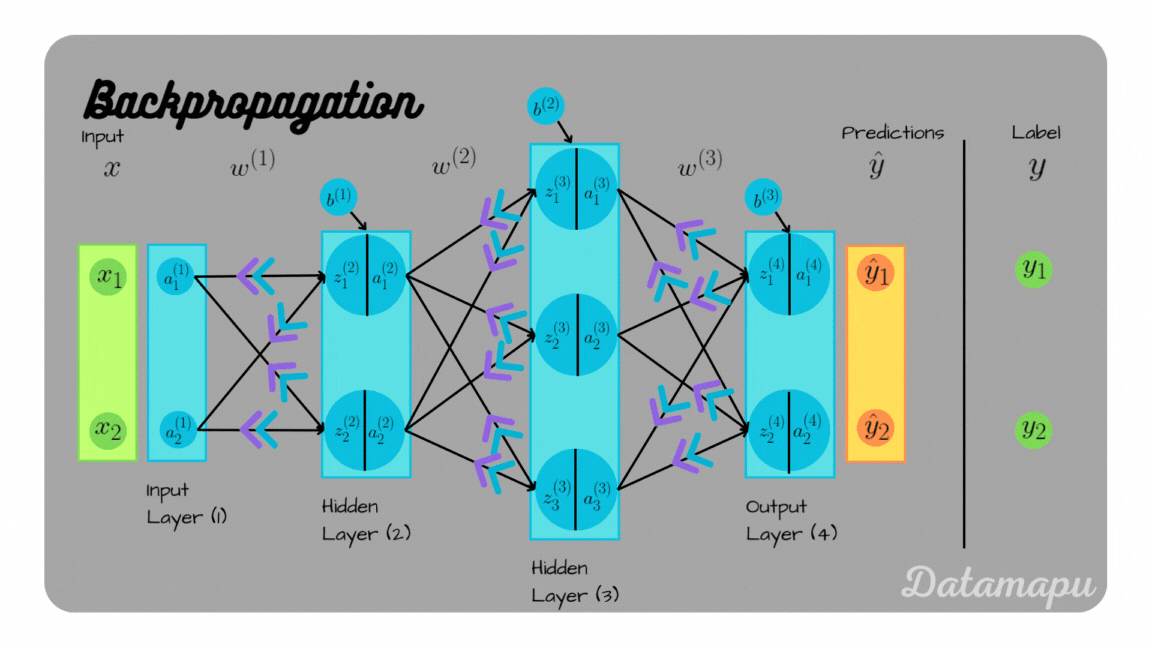
This post is quite long because of the detailed examples. If you want to skip some parts, these are the links to the examples.
Main Concepts of Training a Neural Net
Before starting with the first example, let’s quickly go through the main ideas of the training process of a neural net. The first thing we need, when we want to train a neural net is the training data. The training data consists of pairs of inputs and labels. The inputs are also called features and are usually written as
If not mentioned differently, we use the following data, activation function, and loss throughout the examples of this post.
Training Data
We consider the most simple situation with one-dimensional input data and just one sample
Activation Function
As activation function, we use the Sigmoid function
Loss Function
As loss function, we use the Sum of the Squared Error, defined as
with
1. Example: One Neuron
To illustrate how backpropagation works, we start with the most simple neural network, which only consists of one single neuron.
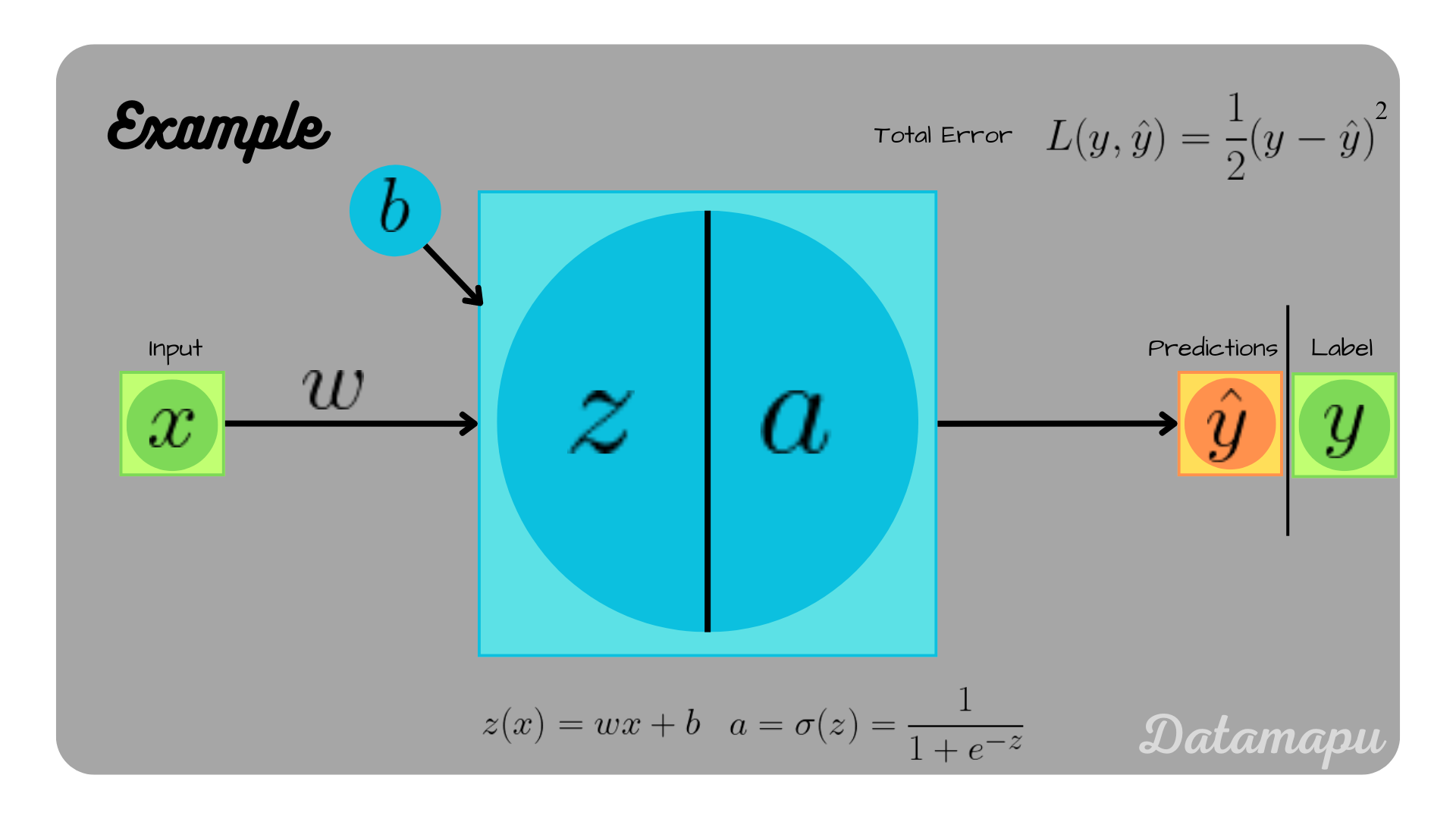 Illustration of a Neural Network consisting of a single Neuron.
Illustration of a Neural Network consisting of a single Neuron.
In this simple neural net,
The Forward Pass
We can calculate the forward pass through this network as
Using the weight, and bias defined above, we get for
The error after this forward pass can be calculated as
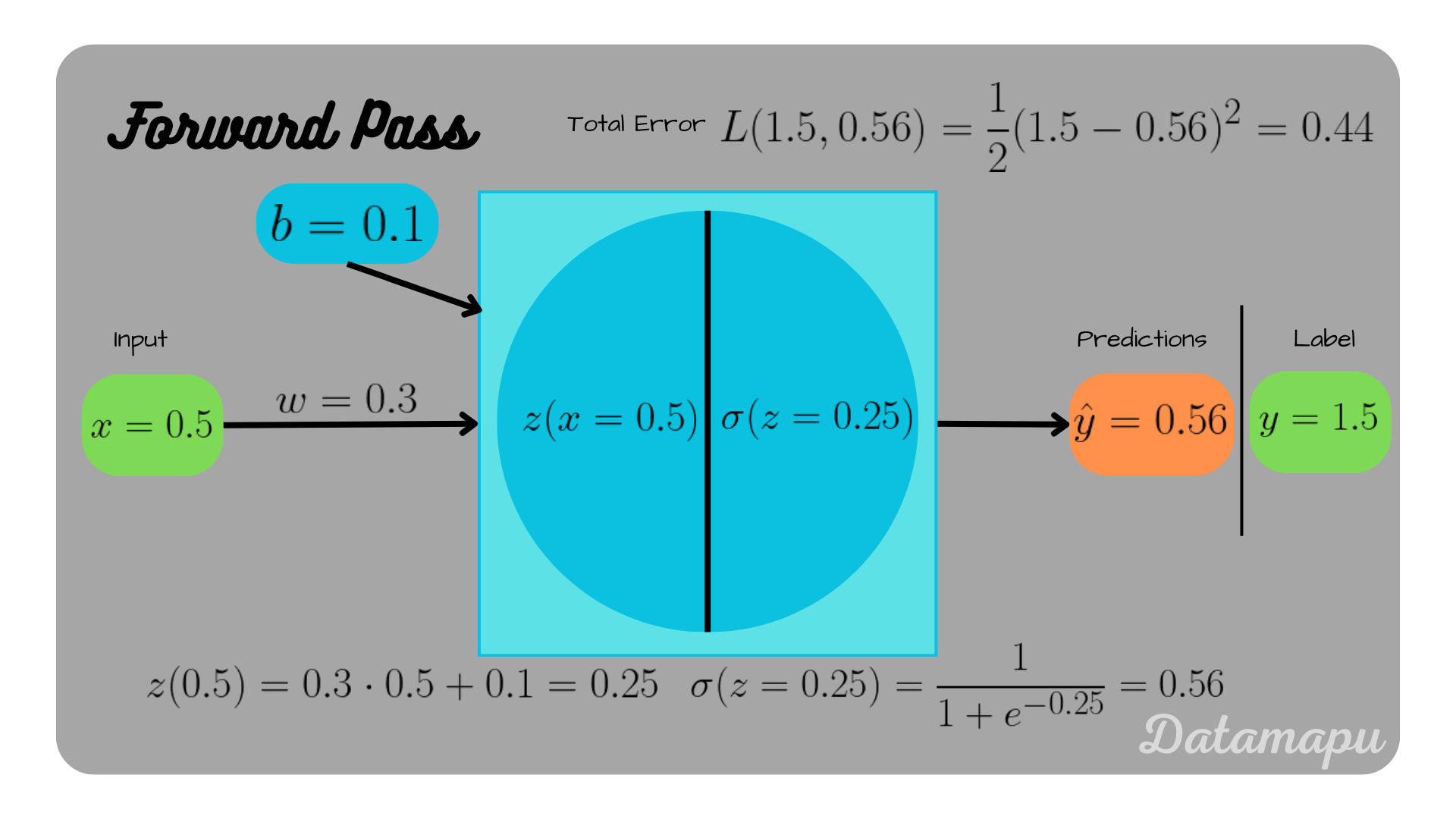 Forward pass through the neural net.
Forward pass through the neural net.
The Backward Pass
To update the weight and the bias we use Gradient Descent, that is
with
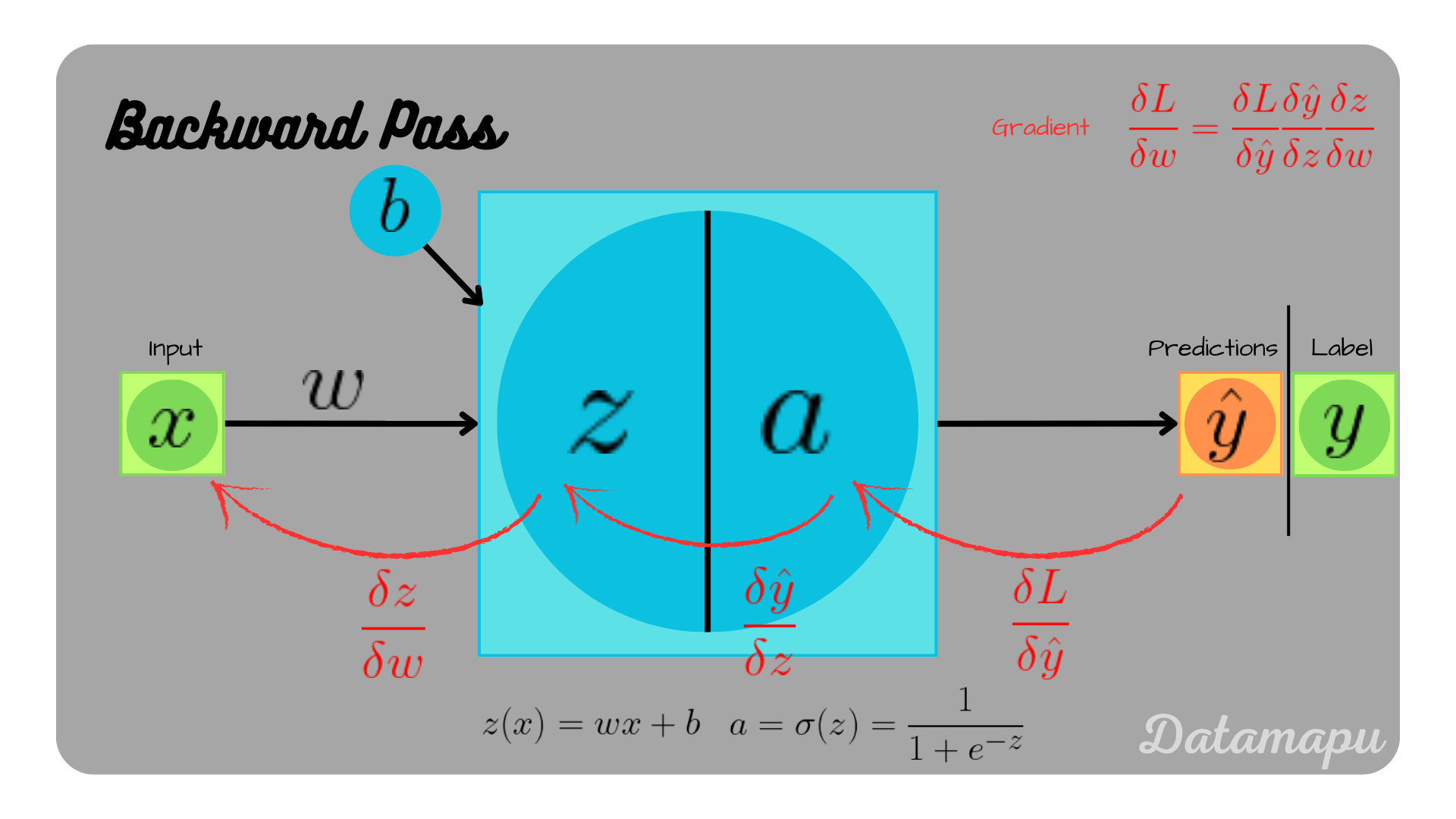
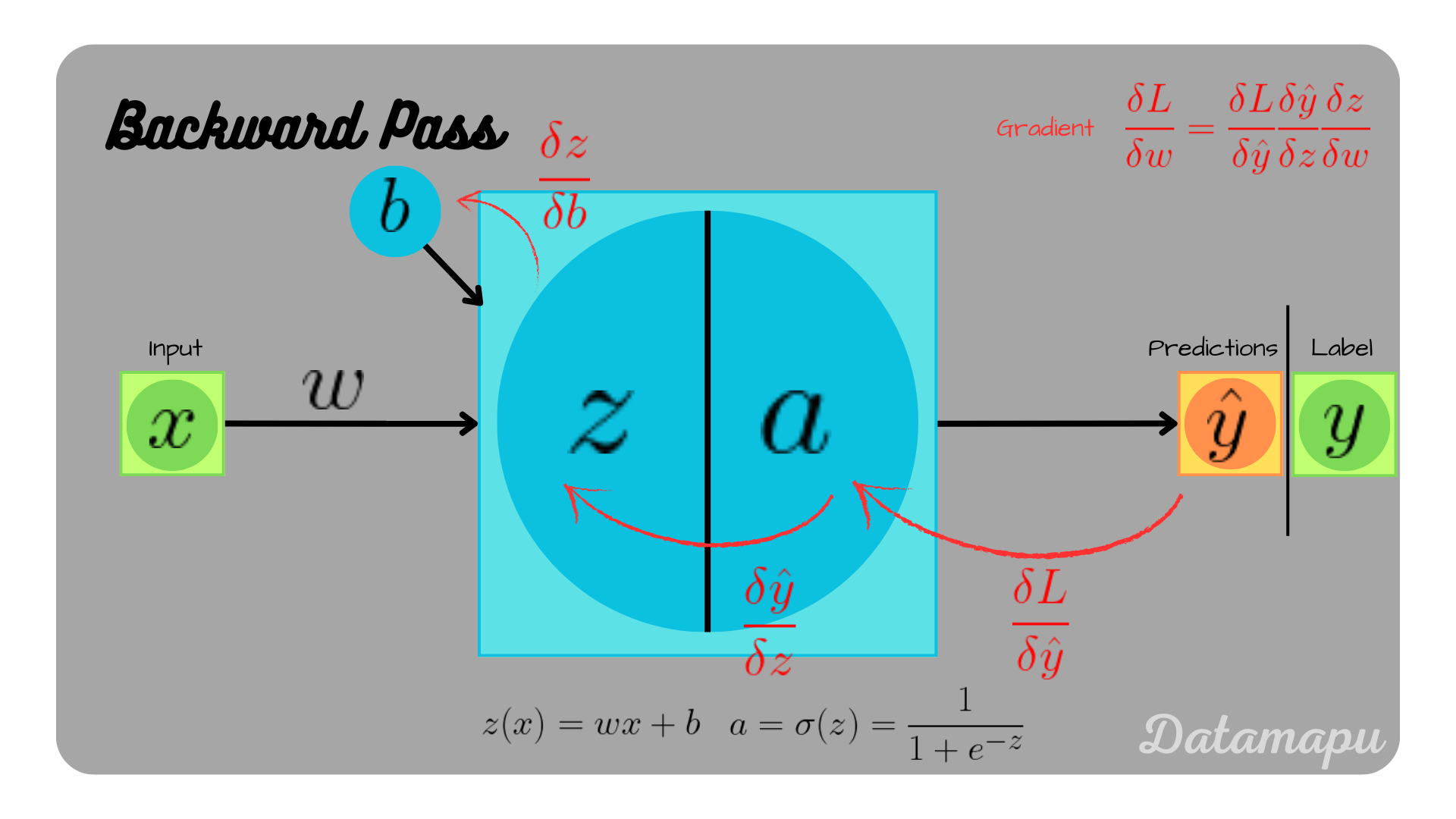 Illustration of backpropagation in a neural network consisting of a single neuron.
Illustration of backpropagation in a neural network consisting of a single neuron.
We can calculte the individual derivatives as
Please find the detailed calculation of the derivative of the sigmoid function in the appendix of this post.
For the data we are considering, we get for the first equation
The second equation leads to
and finally
Putting the equations back together, we get
The calculation for
 Backpropagation for the weight
Backpropagation for the weight
The weight and the bias then update to
Note
With this simple example, we illustrated one forward and one backward pass. It is a good example to understand the calculations, in real projects, however, data and neural nets are much more complex. In reality, one forward pass consists of processing all the
2. Example: Two Neurons
The second example we consider is a neural net, which consists of two neurons after each other, as illustrated in the following plot. Note, that the illustration is slightly different. We skipped the last arrow towards
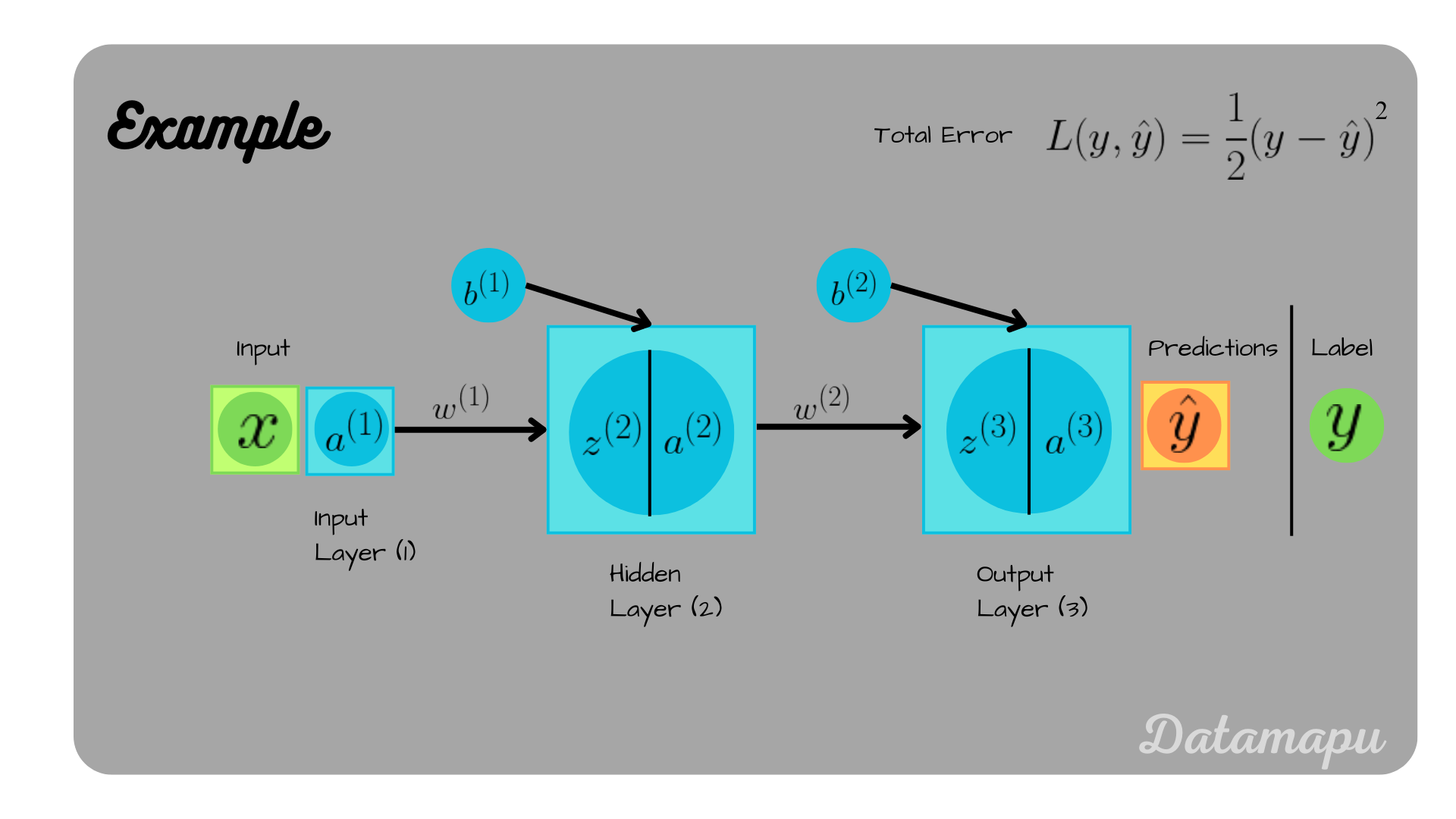 A neural net with two layers, each consisting of one neuron.
A neural net with two layers, each consisting of one neuron.
The Forward Pass
The forward pass is calculated as follows
Together this leads to
Using the values define above, we get
The loss in this case is
The Backward Pass
In the backward pass, we want to update all the four model parameters - the two weights and the two biases.
For
We will now focus on the remaining two. The idea is exactly the same, only we now have to apply the chain-rule several times
and
as illustrated in the following plots.
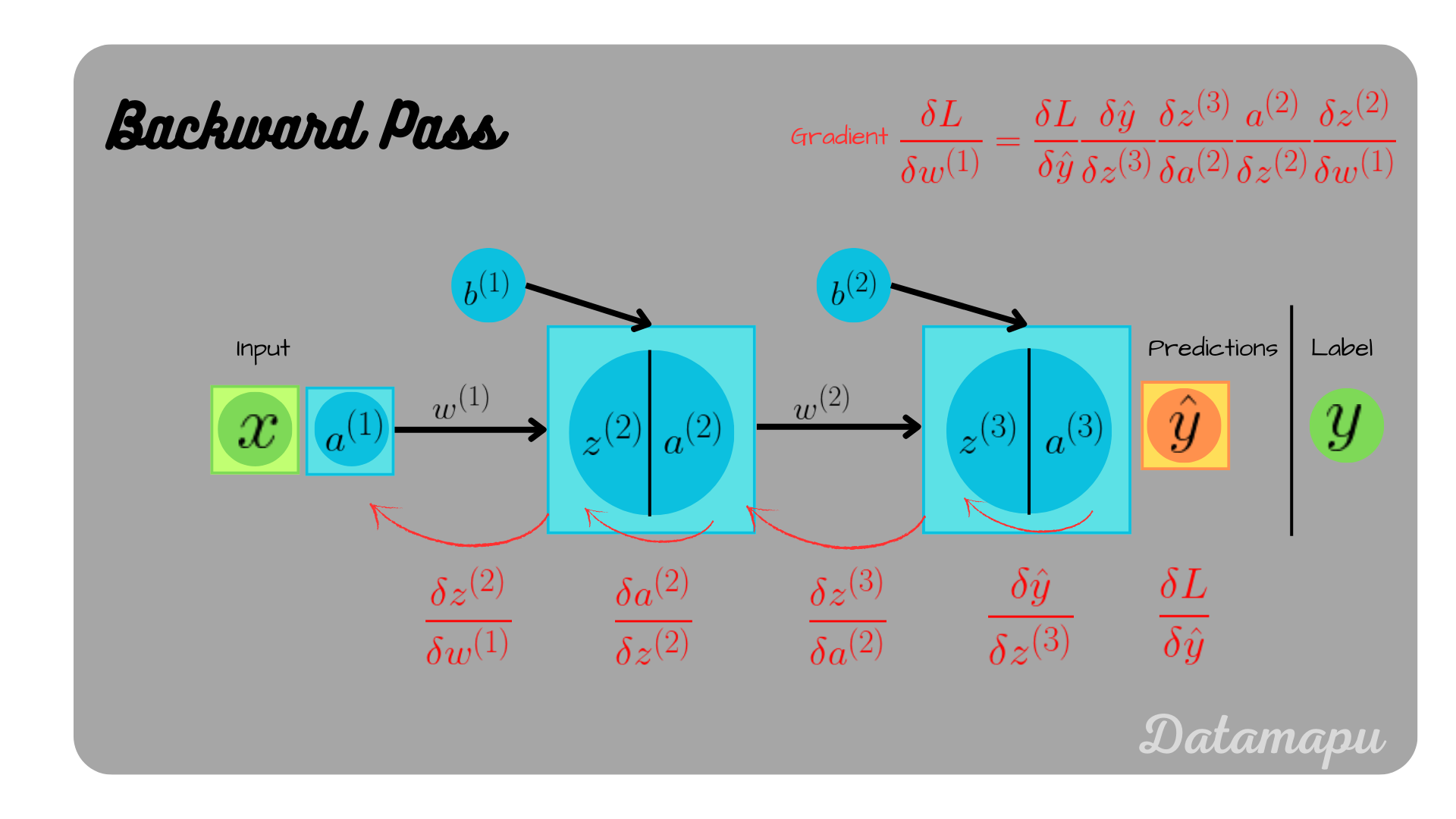
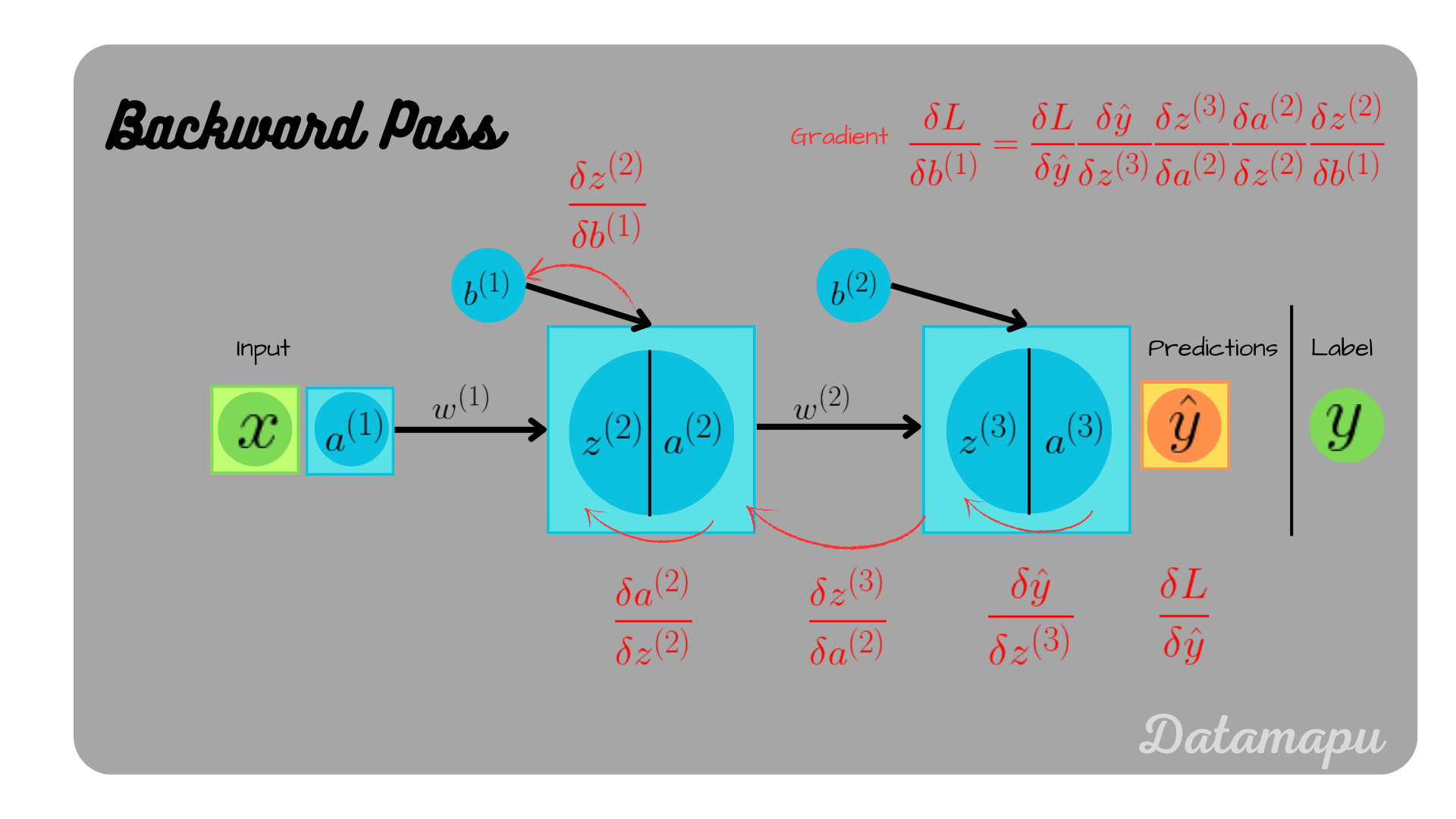 Backpropagation illustrated.
Backpropagation illustrated.
Calculting the individual derivatives, we get
For the detailed development of the derivative of the sigmoid function, please check the appendix of this post. With the values defined, we get for the first equation
For the second equation
with
we get
For the third equation, we get
The fourth equation leads to
with
Replacing this in the above equation leads to
The fifth equation gives
and the last equation is always equal to
Putting the derivatives back together, we get
and
With that we can update the weights
3. Example: Two Neurons in a layer
In this example, we will consider a neural net, that consists of two neurons in the hidden layer. We are not going to cover it in detail, but we will have a look at the equations that need to be calculated. For illustration purposes, the bias term is illustrated as one vector for each layer, i.e. in the below plot
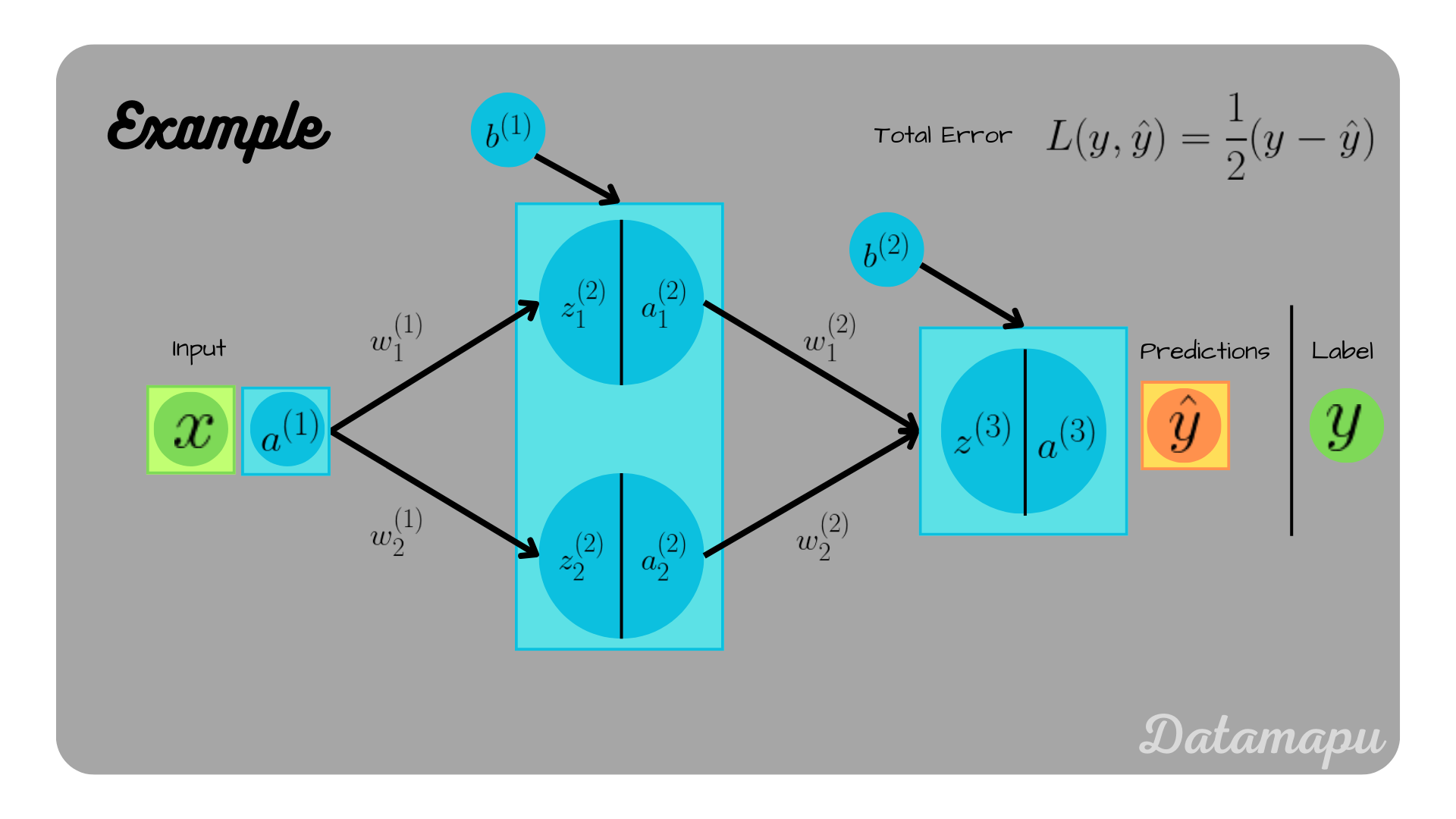 Example with two neurons in one layer.
Example with two neurons in one layer.
Forward Pass
In the forward pass we now have to consider the sum of the two neurons in the layer. It is calculated as
with
this leads to
with
for
Backward Pass
For the backward pass we need to calculate the partial derivatives as follows
We can calculate all the partial derivatives as shown in the above two examples. The calculations for
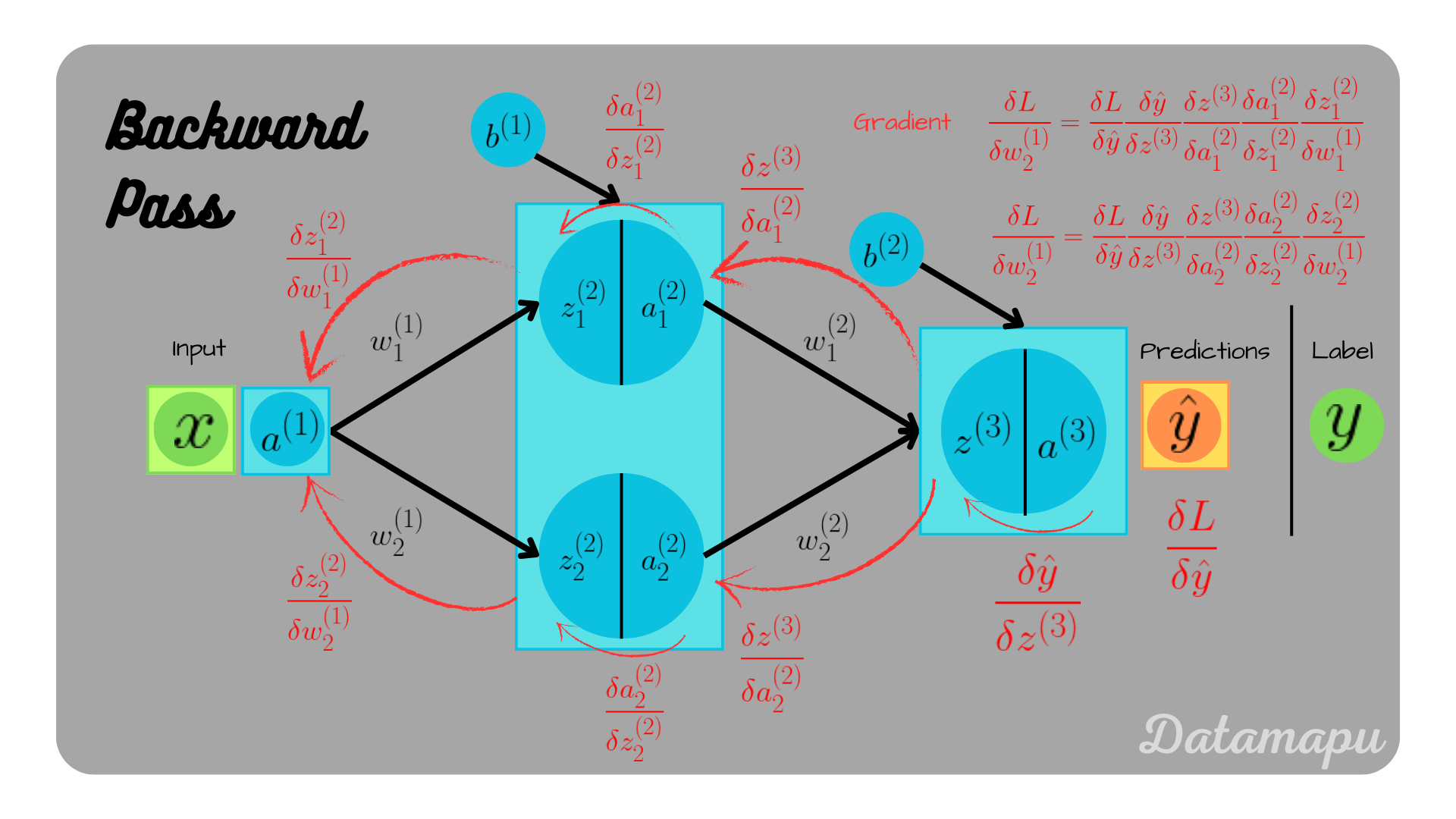 Backpropagation illustrated for the weights.
Backpropagation illustrated for the weights.
 Backpropagation illustrated for the biases.
Backpropagation illustrated for the biases.
We can see that even for this very small and simple neural net, the calculations easily get overwhelming.
Note
In the above considered examples the data used was one-dimensional, which makes the calculations easier. If the output has
The partial derivative of
with
Summary
To train a neural network the weights and biases need to be optimized. This is done using backpropagation. In this post we calculated the backpropagation algorithm for some simplified examples in detail. Gradient Descent is used to update the model parameters. The general concept of calculating the gradient is calculating the partial derivatives of the loss function using the chain rule.
Further Reading
More general formulations of the backpropagation algorithm can be found in the following links.
- Wikipedia
- Neural Networks and Deep Learning - How the backpropagation algorithm works, Michael Nielsen
- Brilliant - Backpropagation
- Backpropagation, Jorge Leonel
Appendix
Derivative of the Sigmoid Functioni
The Sigmoid Function is defined as
The derivative can be derived using the chain rule
In the last expression we applied the outer derivative, calculating the inner derivative again needs the chain rule.
This can be reformulated to
That is, we can write the derivative as follows
 Illustration of the Sigmoid function and its derivative.
Illustration of the Sigmoid function and its derivative.
If this blog is useful for you, please consider supporting.
